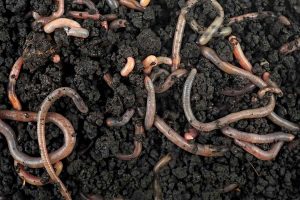How to Improve your Garden Soil for Spring
How to Improve your Garden Soil for Spring
How to Refresh and Improve your Garden Soil for Spring
The winter is often the best time to think about how to improve your garden soil for spring. Everything from garden location planning to storing up compost can give you a good head start to growing your best crops. Good soil is most important when planning to garden organically. Most gardens are not automatically rich in organic matter. Amendments are needed to be added every year to replenish what last year’s crop used.
Soil varies according to region so it really is never a bad idea to get your soil tested ahead of time. Determining what types of plants you would like to grow will help guide you. Getting to know your soil is probably the first step in improving your soil. This is a great website to tell you what type of soil your particular state/are has.
This blog is just the beginning steps of how to improve your garden soil for spring. Other organic matter may be needed that isn’t listed here. Initially, when I started a garden in a new space, I needed to add sand and peat moss to my soil because my gardens had been very dense due to the amount of clay. Amending specific types of soil will not be discussed in this blog. As I come across good resources, I’ll list them here. In this mean time, these are the very basic (but not limited to) important elements to what I feel, are important for improving soil.
Start a Compost Pile
The first way I always add organic matter to improve my soil, is by adding compost. One rule of thumb, according to Healthy Soil, Healthy Plants, Healthy Harvest is to add 1 inch of compost for every 4 months of growing season. This is for zones 4-6. If you are first starting a garden, I would suggest 3 inches of compost.
Making compost is relatively easy. It does, however, take time. A general rough rule of thumb is to use equal parts of green and brown. Allow to sit in a pile/designated space in your garden or a homemade composting bin. This is how I made a couple of composting bins to start. You’ll find an assortment of ways to compost and no one idea is wrong. Once you start saving elements to compost, you will want to occasionally “turn” your compost to allow it to continue it’s decomposing process. Storing and turning compost can take effort, but is well worth it. I would consider turning the compost every week in the winter or when possible, and more often in the spring and summer.
First component for compost: To make compost, simply save any scraps from your kitchen. Include items that are considered nitrogen rich, such as lettuce and carrot scraps, greens and coffee grounds. Most nitrogen components are live, green foods and grass clippings. I tend to stay away from citrus. There is conflicting information out there regarding citrus so I just keep lemons/oranges in containers to make into cleaning products later.
Second component for compost: Adding carbon elements. Include equal part of these items: shredded brown paper, dried leaves and some newspaper. Don’t use shiny paper and, keep in mind any fancy-inked paper shouldn’t be disposed of into your compost pile.
Adding Manure
Adding manure to your garden beds will definitely help you improve your soil for spring. However, there are some considerations. Mainly, any manure should be limited to cow, horse, chicken or mushroom. Never use dog, cat or reptile poop. Secondly, wait at least a year (minimum 4 months) to use manure if it is fresh. Even if I buy manure from the store, I only put it in my gardens in the fall so that the manure doesn’t burn the plants.
Adding Wormcastings
Worm castings are fun to me, because they are so representative of God’s infinite ability to provide. Who would have thought that poop from a worm could be purchased (or created from a worm farm you start yourself!)?
There are a lot of great resources for worm castings (I’ll post below, too). You may also let worm castings soak in water to create composting tea. This will take a little more thought and equipment but may be worth the effort. A recipe for tea is here.
If you are unsure of how much to have of each soil component, a good guide to go by is to have these percentages in your garden:
40% or a little more of garden soil
30% garden compost that you might develop or purchase
20% of manure, such as cow, horse or chicken
10% of worm castings
From here, you can just adapt your soil to whatever it is that you are growing.

Equipment ideas/suggestions:
Gardening gloves (these are awesome)
Plant Propagation Station for root sprouting
A good resource for raising worms for worm castings
A great resource on what soil is and links to other scientific information about soil.
Some links are affiliate links, which means I make a small commission at no extra cost to you. See more info here.
Thinking about how to improve your garden soil for spring? Everything from garden location planning to storing up compost can give you a good head start to growing your best crops. Good soil is most important when planning to garden organically. Most gardens are not



